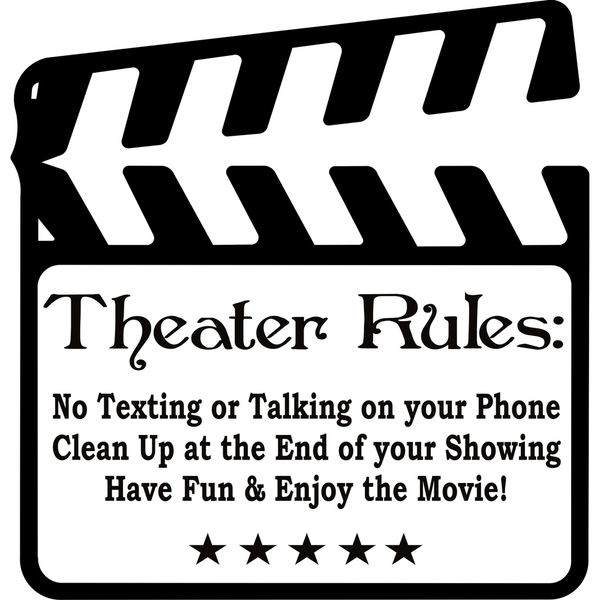Hey there, movie lovers! If you're anything like me, you've probably spent countless nights binge-watching films, wondering what makes some movies magical while others fall flat. But did you know that behind the scenes, there's an entire world of movie rules rules that filmmakers live by? These unwritten laws shape how stories are told, characters are developed, and audiences are captivated. So, let's dive into the fascinating world of cinema and uncover the secrets that make the film industry tick!
Now, before we get into the nitty-gritty, let's talk about why movie rules matter. These rules aren't just random guidelines; they're the backbone of successful storytelling. From blockbusters to indie films, every director, writer, and producer follows these principles, whether consciously or subconsciously. Understanding them can help you appreciate films on a deeper level and even inspire your own creative projects.
But here's the thing—movie rules aren't always written down. They're more like unwritten codes that filmmakers learn through experience, mentorship, and trial and error. And while breaking these rules can sometimes lead to groundbreaking art, knowing them is the first step to mastering the craft. So, grab your popcorn, and let's explore the rules that rule the movie world!
Read also:Lee Sehee Husband The Inside Story Of Love Life And Success
What Are Movie Rules Rules Anyway?
Alright, so you're probably wondering, what exactly are these "movie rules rules"? Think of them as the golden standards of filmmaking—time-tested principles that have stood the test of time. They cover everything from scriptwriting to cinematography, editing to sound design. These rules aren't meant to restrict creativity; rather, they provide a framework for storytellers to work within.
Here's the deal: every great movie you've ever watched follows at least a few of these rules. For example, the three-act structure is one of the most fundamental rules in screenwriting. It divides a story into setup, confrontation, and resolution, creating a narrative arc that keeps audiences hooked. Another classic rule is the rule of thirds in cinematography, which helps create visually pleasing compositions. These rules may seem simple, but they're the foundation of cinematic excellence.
Why Do Movie Rules Matter?
Movie rules matter because they ensure that films resonate with audiences. Let's face it—viewers have high expectations. They want stories that engage, characters that feel real, and visuals that transport them to another world. Without rules, movies would lack structure, coherence, and emotional depth. Imagine watching a film where the plot jumps around randomly, the characters act inconsistently, and the pacing feels all over the place. Not exactly a cinematic masterpiece, right?
But here's the kicker: knowing the rules also empowers filmmakers to break them when the time is right. Some of the greatest films in history have defied conventions, but they did so intentionally and with purpose. Take "Pulp Fiction," for example. Quentin Tarantino famously broke the chronological storytelling rule, but it worked because it added layers of complexity to the narrative. So, while rules are essential, they're not set in stone.
Top 10 Movie Rules Rules Every Filmmaker Should Know
Now that we've established why movie rules are important, let's dive into the top 10 rules that every filmmaker should know. These aren't just random tips; they're tried-and-true principles that have guided some of the best films ever made. So, whether you're a budding filmmaker or just a curious movie buff, these rules are worth exploring.
1. Show, Don't Tell
This is one of the most fundamental rules in filmmaking. Instead of relying on dialogue to explain everything, use visuals, actions, and subtle cues to convey emotions and plot points. For example, instead of having a character say, "I'm sad," show them staring out a rainy window with a tear rolling down their cheek. It's more powerful and memorable.
Read also:Unveiling The Phenomenon Mcphee American Idol
2. The Three-Act Structure
As I mentioned earlier, the three-act structure is the backbone of most successful films. Act one sets up the story, act two builds tension and conflict, and act three resolves everything. While some filmmakers experiment with this structure, it's a great starting point for crafting compelling narratives.
3. Rule of Thirds
In cinematography, the rule of thirds is a composition guideline that divides the frame into nine equal parts using two horizontal and two vertical lines. Placing key elements along these lines or at their intersections creates a more balanced and visually appealing shot. It's a simple rule, but it makes a huge difference in the final product.
4. KISS (Keep It Simple, Stupid)
Complexity can be tempting, but simplicity often wins the day. Whether it's the story, dialogue, or visual effects, keeping things simple allows the audience to focus on what truly matters. Remember, less is often more in filmmaking.
5. Subtext Over Text
Subtext refers to the underlying meaning behind what characters say or do. It adds depth and nuance to a story, making it more engaging for viewers. For example, a character might say, "I'm fine," but their body language and tone suggest otherwise. This creates tension and intrigue.
Breaking the Rules: When and How to Do It
While movie rules are important, they're not meant to be followed blindly. Some of the most iconic films in history have broken traditional rules to stunning effect. But here's the thing: breaking rules only works if you know why you're doing it and how it serves the story. Let's explore some examples of rule-breaking done right.
1. Non-Linear Storytelling
As mentioned earlier, "Pulp Fiction" famously broke the chronological storytelling rule. By presenting events out of order, Quentin Tarantino created a unique narrative experience that keeps viewers guessing. It's a risky move, but one that paid off big time.
2. Minimal Dialogue
Some films, like "The Revenant," rely heavily on visuals and sound design rather than dialogue. This approach can create a more immersive experience, allowing viewers to connect with the story on a deeper, more primal level. However, it requires exceptional craftsmanship to pull off successfully.
3. Breaking the Fourth Wall
Breaking the fourth wall—when characters acknowledge the audience—can be a powerful storytelling device when used sparingly. Think of Ferris Bueller addressing the camera or Deadpool's constant quips. It adds a layer of humor and self-awareness that resonates with modern audiences.
Movie Rules in Action: Case Studies
To truly understand movie rules, it helps to see them in action. Let's take a look at some classic films and how they embody these principles.
1. The Godfather
"The Godfather" is a masterclass in storytelling, character development, and cinematography. It follows the three-act structure perfectly, using subtext to create tension and depth. The film also adheres to the rule of thirds, with stunning compositions that enhance its visual impact.
2. Inception
Christopher Nolan's "Inception" is a perfect example of how complexity can work when balanced with simplicity. While the plot is intricate, the core theme of dreams within dreams is easy to grasp. The film also uses visual effects sparingly, focusing on practical effects to ground the story in reality.
3. Parasite
Bong Joon-ho's "Parasite" breaks several traditional rules while still following others. Its non-linear storytelling keeps viewers engaged, while its use of symbolism adds layers of meaning. The film also adheres to the rule of thirds, creating visually striking compositions that complement its dark themes.
The Future of Movie Rules
As technology continues to evolve, so too do the rules of filmmaking. Advances in CGI, virtual reality, and AI are changing the way stories are told, but the core principles remain the same. Whether you're shooting on a smartphone or a Hollywood set, the fundamentals of storytelling, cinematography, and sound design still apply.
That said, the future of movie rules lies in innovation. Filmmakers are constantly pushing boundaries, experimenting with new techniques, and redefining what cinema can be. From interactive films to immersive VR experiences, the possibilities are endless. But no matter how far we go, the rules will always serve as a foundation for creativity.
How to Apply Movie Rules to Your Own Projects
If you're a budding filmmaker, applying movie rules to your projects can elevate your work to the next level. Here are a few tips to get you started:
- Start with the basics: Familiarize yourself with the three-act structure, rule of thirds, and other fundamental principles.
- Study great films: Analyze how successful films use these rules to tell compelling stories.
- Experiment and innovate: Once you understand the rules, try breaking them in creative ways that serve your story.
- Seek feedback: Share your work with others and be open to constructive criticism.
Conclusion: Embrace the Rules, But Don't Be Afraid to Break Them
So, there you have it—a comprehensive guide to movie rules rules. Whether you're a seasoned filmmaker or just a movie enthusiast, understanding these principles can deepen your appreciation for cinema. Remember, rules are there to guide you, not restrict you. So, embrace them, learn from them, and don't be afraid to break them when the moment calls for it.
Now, it's your turn! Have you noticed any movie rules in your favorite films? Do you have a favorite rule-breaking moment? Share your thoughts in the comments below, and don't forget to check out our other articles for more insights into the world of cinema. Happy filmmaking, and may the rules be ever in your favor!
Table of Contents
- What Are Movie Rules Rules Anyway?
- Why Do Movie Rules Matter?
- Top 10 Movie Rules Rules Every Filmmaker Should Know
- Breaking the Rules: When and How to Do It
- Movie Rules in Action: Case Studies
- The Future of Movie Rules
- How to Apply Movie Rules to Your Own Projects
- Conclusion: Embrace the Rules, But Don't Be Afraid to Break Them


